Sudden noise leaves lasting scars in sensitive dogs.
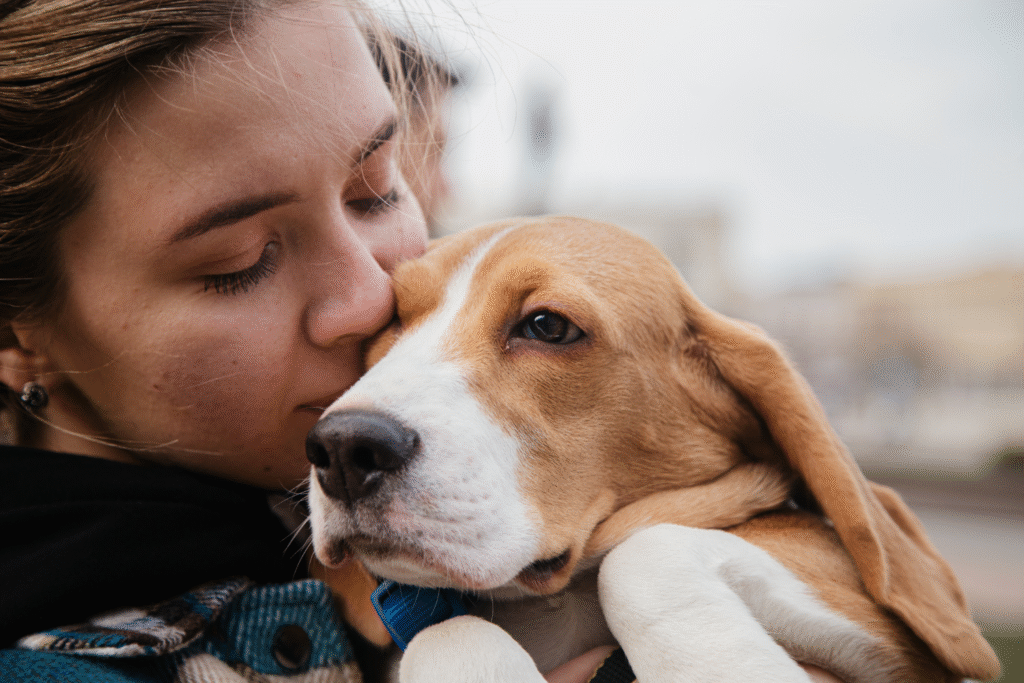
Every year, fireworks season sends countless dogs trembling into corners, under beds, or into the arms of their owners. For some breeds, the response goes far beyond temporary fear, many develop lasting anxiety that affects behavior long after the explosions fade. A new survey of veterinarians and owners found that certain breeds are far more susceptible to severe noise sensitivity than others, especially those already predisposed to stress or hyper-alertness. Understanding which breeds are most vulnerable could help owners prepare better for the next fireworks-filled night.
1. Border Collies show the highest anxiety levels.

Highly intelligent and sensitive, Border Collies top most studies for noise-related anxiety. Their acute hearing and quick reflexes make them exceptional working dogs, but also prone to overstimulation. As stated by a recent behavioral study published in Scientific Reports, Border Collies ranked first in overall fear response to fireworks among more than 13,000 dogs surveyed.
Because they constantly anticipate cues and signals, loud and unpredictable sounds overload their finely tuned nervous systems. Many continue to display anxiety weeks after exposure, associating outdoor darkness or open fields with explosions that once terrified them.
2. Australian Shepherds react intensely to loud sounds.

Owners frequently report extreme fear reactions in Australian Shepherds during fireworks, ranging from frantic running to destructive behavior indoors. Their alert temperament, ideal for herding, becomes a liability when sensory input turns chaotic. That heightened vigilance leads to panic behaviors that can last for hours after the noise stops.
According to the survey published by the University of Helsinki, herding breeds like Australian Shepherds are statistically more likely to experience severe, lasting distress after fireworks. Their strong memory retention means they may dread certain times of year long before the first pop reaches their ears.
3. German Shepherds often exhibit prolonged post-firework stress.
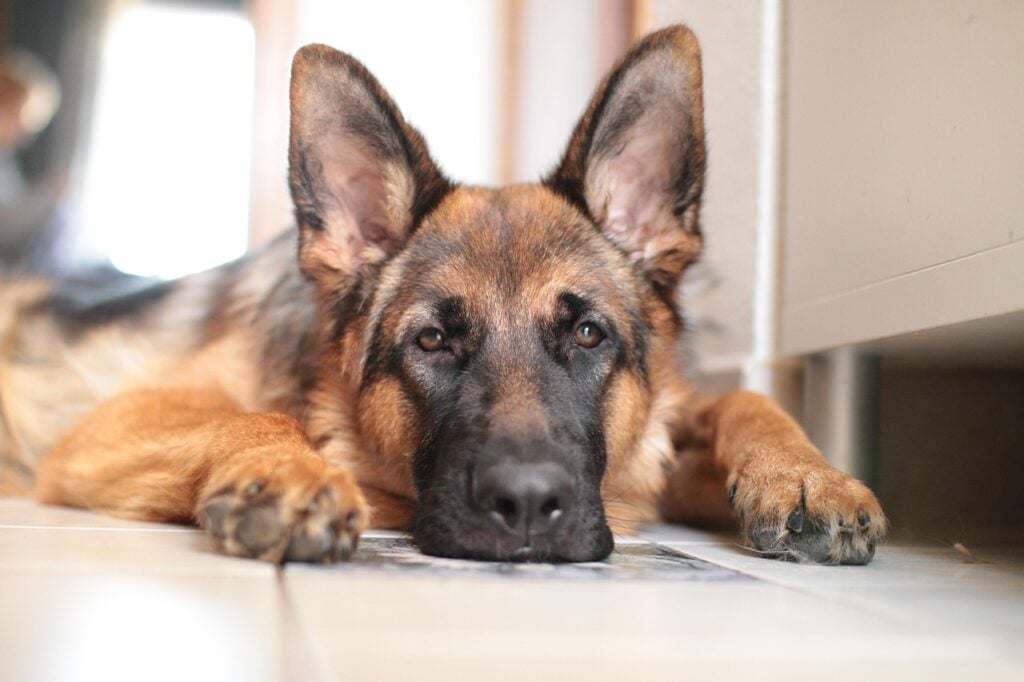
While confident and courageous in most situations, German Shepherds are disproportionately represented among dogs treated for post-firework anxiety, as reported by the American Veterinary Medical Association. The noise can trigger hypervigilance, panting, and pacing that persist for days. Their protective nature amplifies the stress, since they may interpret fireworks as threats to their family.
Handlers often notice secondary effects such as loss of appetite or reluctance to go outside. Because the breed bonds deeply with owners, they mirror human reactions—if people tense up, so do their dogs. That emotional feedback loop prolongs recovery well past the holiday.
4. Labrador Retrievers struggle more than people expect.
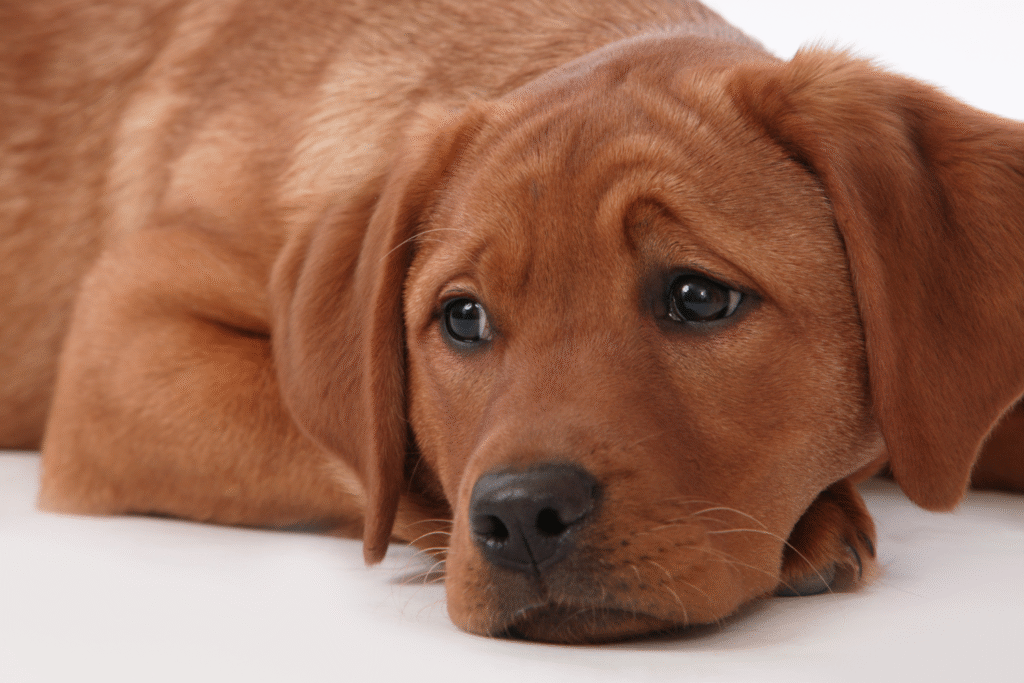
Despite their reputation for steadiness, Labradors rank high for noise sensitivity when data are corrected for population size. Their friendly temperament masks an underlying startle reflex that intensifies with age or poor early exposure. Some studies link it to genetics that influence dopamine regulation, which affects fear response and resilience.
Many Labs respond by shaking or hiding under furniture until the noise stops, and some develop ongoing anxiety toward storms or neighborhood sounds afterward. Their eagerness to please means they suppress outward aggression, but the stress still takes a toll internally, sometimes showing later as clinginess or separation anxiety.
5. Jack Russell Terriers tend to panic and flee.
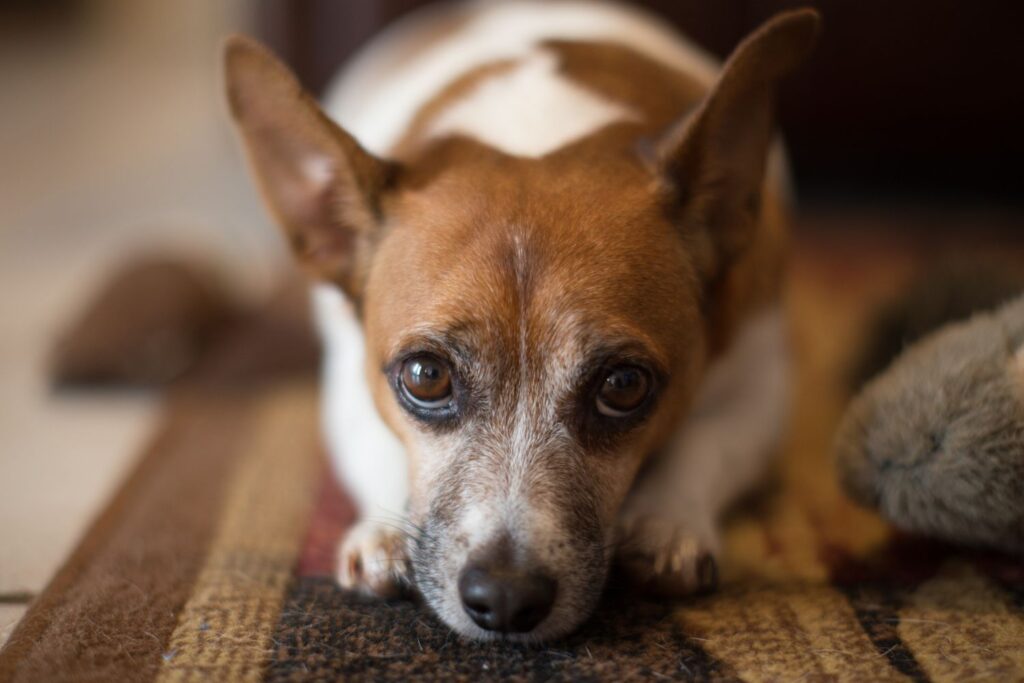
Jack Russells have strong survival instincts and quick reflexes that serve them well in the field, but fireworks can override logic entirely. The sudden flashes and bangs trigger flight responses, leading many to bolt from homes or yards in blind panic. Their small size and speed make recovery difficult once they escape.
Veterinarians note that terriers’ strong prey drive and impulsivity leave little room for calm assessment when startled. The noise feels like an attack, not just a sound. Afterward, many display lingering distrust of the outdoors or become more reactive to future noises.
6. Cocker Spaniels show chronic sensitivity after exposure.
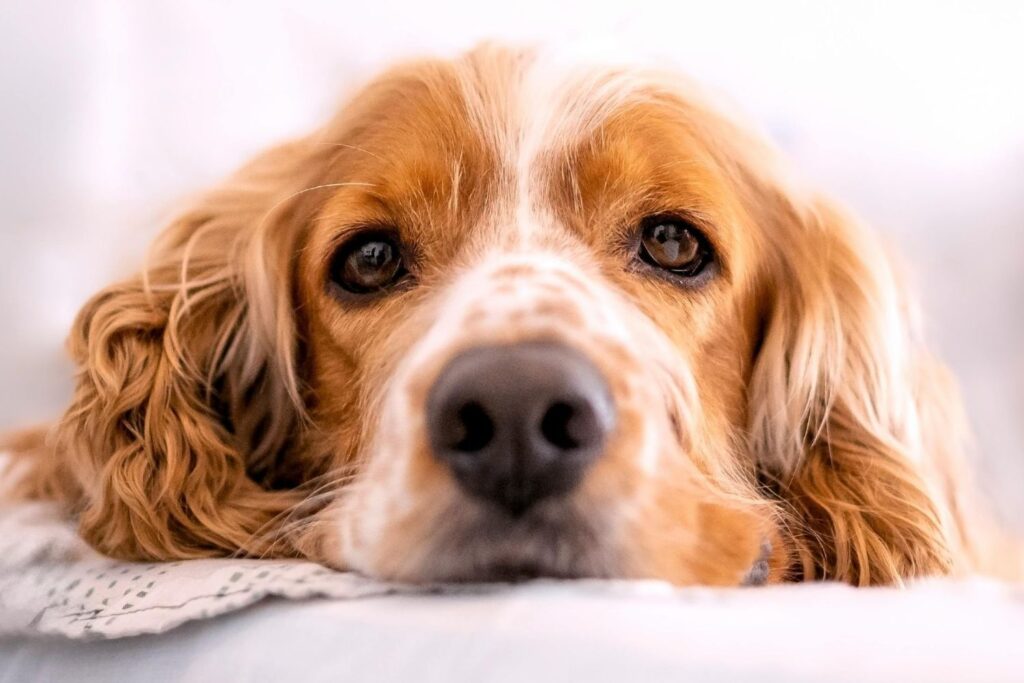
This gentle breed often internalizes fear. Cocker Spaniels startled by fireworks may tremble silently, drool, or hide for hours, but the long-term impact can be severe. Once they associate loud noises with distress, even minor bangs can provoke fear responses. Their emotional memory keeps the trauma alive long after the event.
Owners sometimes report increased clinginess or refusal to sleep alone following fireworks. Because they read human tone closely, nervous reassurance can actually heighten their fear. Calm desensitization training works better, but preventing exposure remains key for maintaining their well-being.
7. Shetland Sheepdogs react strongly to rapid bursts of sound.
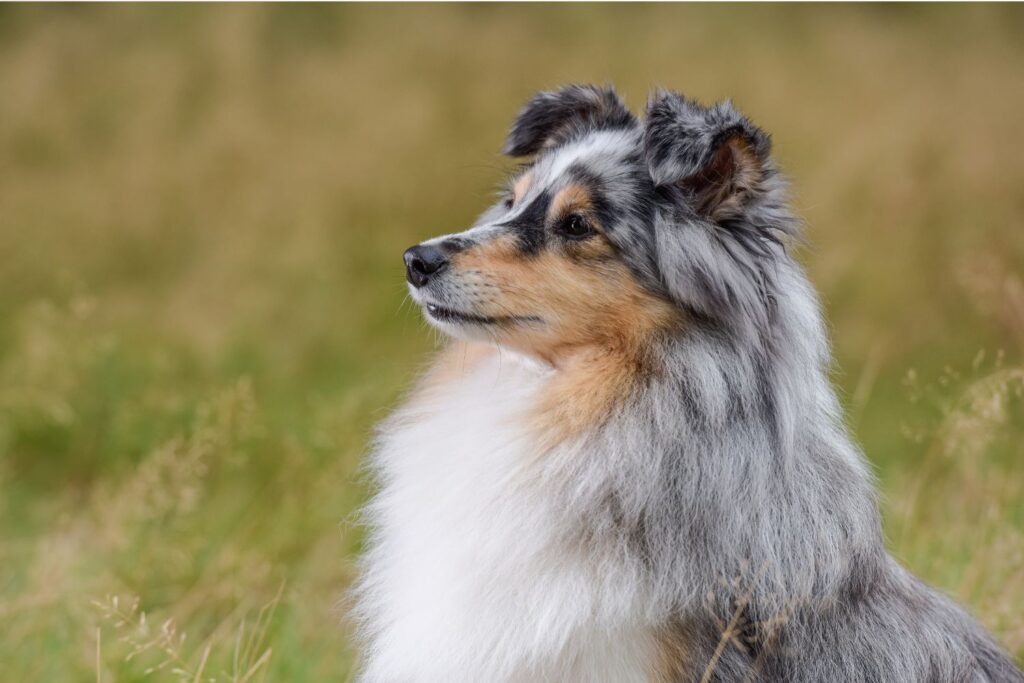
The Sheltie’s combination of intelligence and sensitivity makes them agile learners but emotionally fragile under stress. Fireworks, with their unpredictable pattern and echoing reverberations, create sensory chaos that overwhelms their nerves. Many begin trembling or barking uncontrollably before the first flash is even visible.
Their long coats can trap static electricity during storms, which may compound their discomfort when fireworks follow. Owners report that Shelties often anticipate noise based on atmospheric changes, showing anxiety hours before an event begins. That anticipatory stress may explain their high rankings in behavioral fear surveys.
8. Greyhounds often freeze rather than flee.

Greyhounds react differently from most dogs when frightened. Instead of running or barking, many freeze, their bodies stiff and eyes wide, as if shutting down completely. This immobility can mislead owners into thinking they’re calm, when in fact they’re overwhelmed. Studies on retired racing Greyhounds show a strong correlation between fireworks exposure and withdrawal behavior afterward.
Their quiet nature hides high emotional sensitivity. Once distressed, they may avoid open spaces, resist leash walks, or tremble even at distant rumbles. Because of their thin coats and low body fat, they also register physical shock faster, compounding their stress response to noise.
9. Vizslas become restless for days after fireworks.
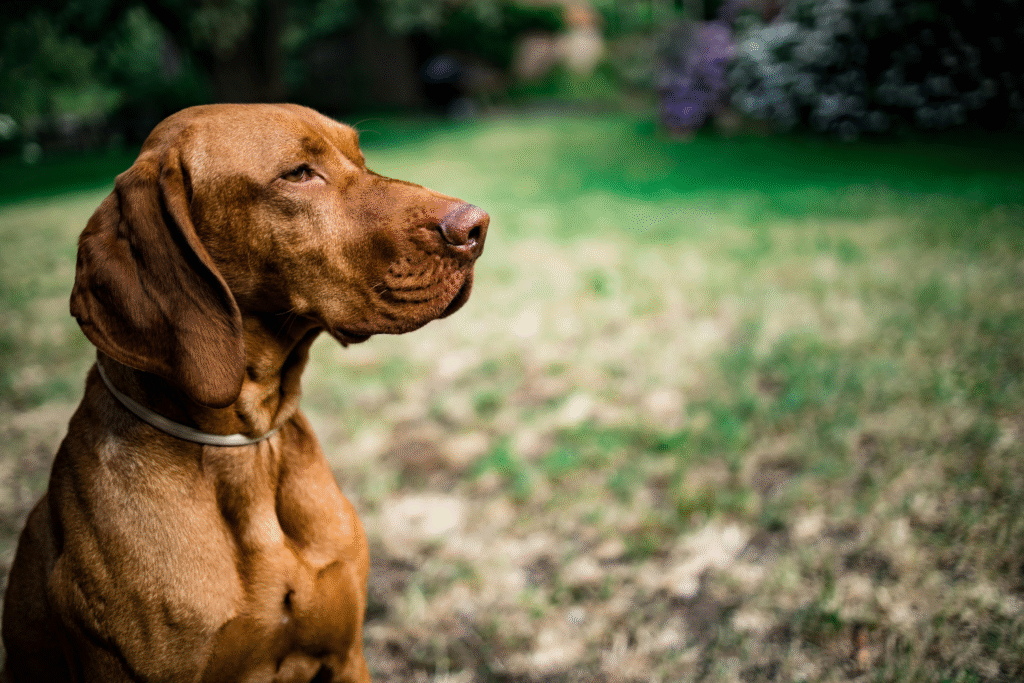
The affectionate and energetic Vizsla bonds deeply with its owner, which makes separation and loud disturbances especially difficult. Fireworks don’t just startle them—they disrupt their entire sense of safety. After a noisy night, many pace, refuse food, or cling to family members.
Veterinarians note that the breed’s sensitivity stems from its social dependence. Once they associate the outside world with frightening sounds, recovery can take several days. Some even regress in training or lose interest in play until they rebuild trust that the environment is safe again.
10. Golden Retrievers develop hidden long-term phobias.
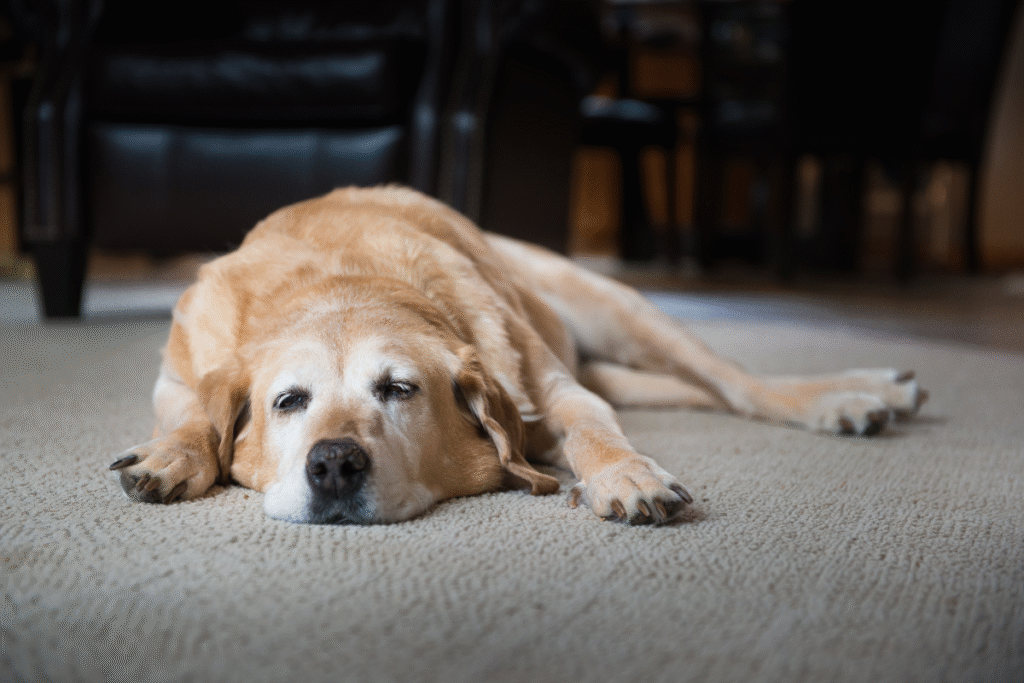
Known for their easygoing nature, Golden Retrievers might not show panic outwardly, but research indicates they internalize stress during fireworks. The University of Helsinki’s 2023 canine fear database lists them among breeds prone to long-term noise aversion despite calm exteriors.
Owners often notice subtle changes—reluctance to go outside, increased panting, or sudden whining months after an event. Their eagerness to please makes them suppress visible panic, yet their heart rate and cortisol levels spike dramatically during fireworks, suggesting deep physiological anxiety that lingers unseen.
11. Bichon Frises struggle to recover from loud bursts.
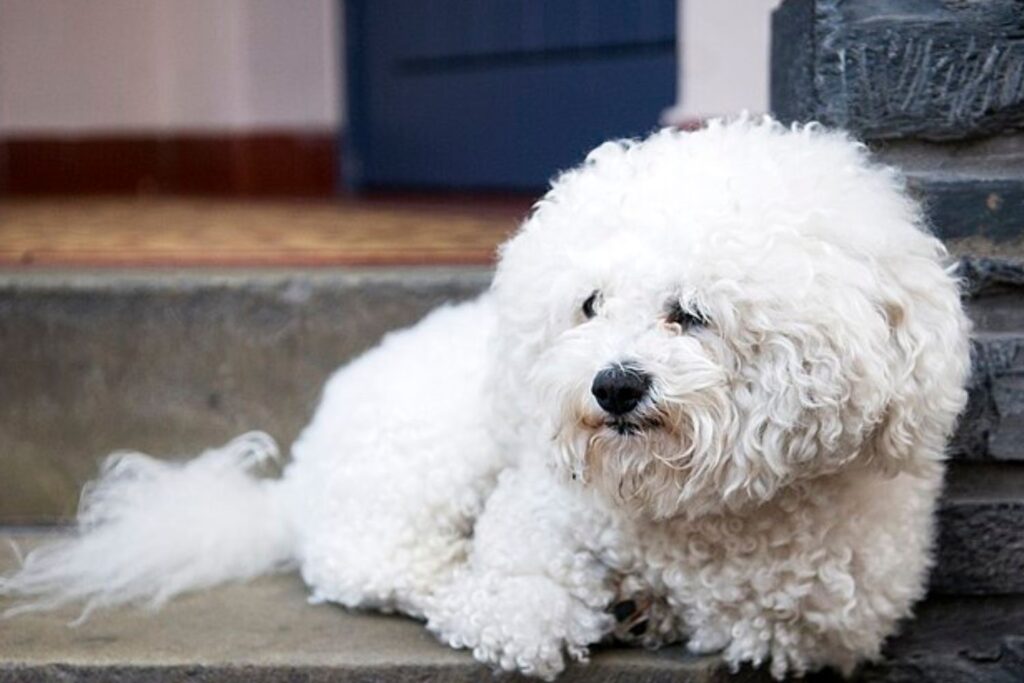
Small and affectionate, Bichons tend to interpret loud noises as direct threats. After exposure to fireworks, many shake, hide under furniture, or refuse food for extended periods. Their strong attachment to people can worsen anxiety, since being left alone during events amplifies fear.
Because they recover slowly, owners often see the same reactions reappear with thunder or even household clatter. In surveys of small companion breeds, Bichons rank near the top for persistent sound-related anxiety, proving that size doesn’t shield from lasting emotional stress.
12. Miniature Schnauzers become hyper-alert and defensive.
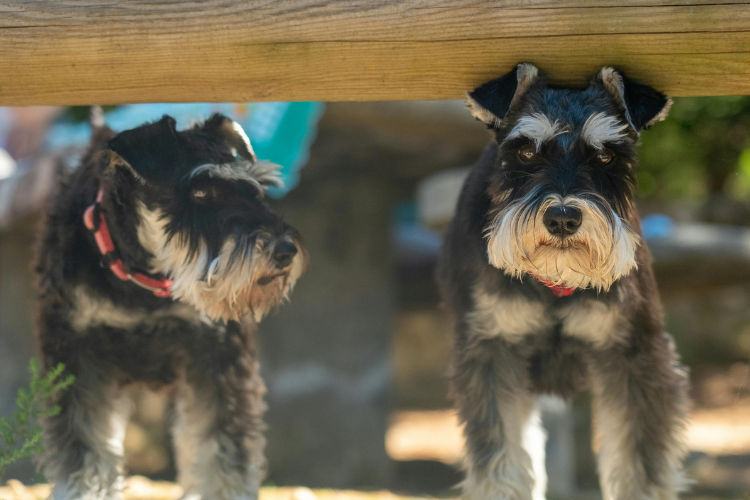
Miniature Schnauzers, bred as alert watchdogs, are hardwired to react quickly to unexpected sounds. Fireworks activate those instincts at full force. Many bark relentlessly or circle the room as adrenaline spikes, showing frustration rather than pure fear. That hypervigilance can last long after the fireworks stop.
Their intensity works against them when the soundscape is chaotic. Once agitated, they struggle to settle down, sometimes trembling through the night. Consistent calm routines and safe retreat spaces are crucial to prevent lingering anxiety from developing into chronic stress behaviors.
13. Beagles vocalize their fear more than most breeds.

Beagles often meet fireworks with frantic howling that echoes for hours. Their sensitive hearing and social nature make silence feel threatening after the noise ends. When separated from their families, their anxiety intensifies, leading to destructive scratching or digging to escape confinement.
Because Beagles rely heavily on companionship for emotional regulation, isolation during fireworks can worsen the experience. Many owners find that close human presence, soothing background sound, and dim lighting help them weather the storm more safely and rebuild confidence afterward.
14. Italian Greyhounds display fragile, long-lasting nervous reactions.

Even among small breeds, Italian Greyhounds stand out for their fragility under stress. Fireworks send many into trembling fits that last hours. Some refuse to eat or even use the bathroom outdoors for days. Their delicate build and nervous temperament amplify the physiological shock of loud noise.
According to veterinary behaviorists studying breed temperament, Italian Greyhounds retain fear associations longer than most small dogs, sometimes developing full-blown noise phobias that extend to door slams or traffic sounds. Their reactions serve as a reminder that anxiety after fireworks isn’t fleeting—it can shape behavior for years without intervention.
